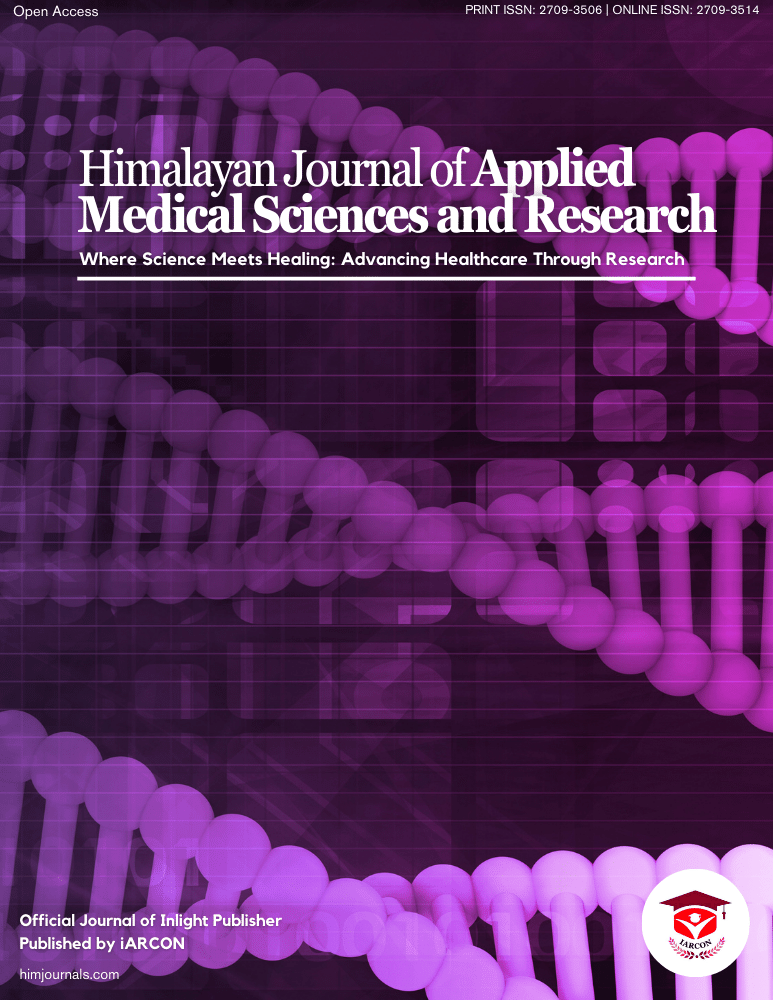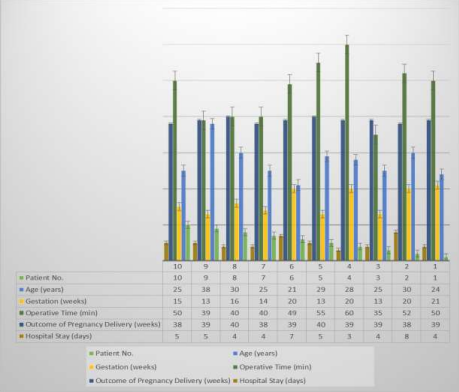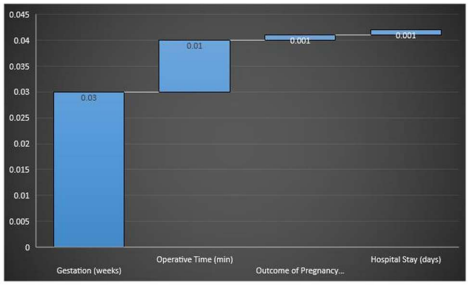The surgery method (open or laparoscopic appendectomy) does not significantly affect the development of pregnancy complications such as loss or premature birth. However, open appendectomy is associated with a significantly increased risk of infectious wound complications, a longer period of analgesia, hospitalization, and causes worse cosmetic outcomes. There is one description of successful laparoscopic appendectomy in the third trimester of pregnancy [1]. However, it is not widely spread and requires further research. It is necessary to remember the risks of damage to the pregnant uterus during laparoscopy at any stage of pregnancy. The surgical technique in pregnant women with all forms of acute appendicitis is not different from that in the general population. Still, it modifies access according to gestational age, requires the gentlest techniques, and avoids uterine contact. After entering the abdominal cavity, the table with the pregnant woman should be placed in the left lateral position. For the installation of the first trocar, an open technique is recommended. Carboxyl teal peritoneum should be kept as low as possible, no more than 10-12 mm Hg. Before the operation, the level of the fundus of the uterus should be determined; if this is not done by palpation, an ultrasound examination should be performed. In the early stages of pregnancy (up to the thirteenth week), placing the first trocar above the navel in the midline is recommended. All other instruments are inserted under strict visual control from the peritoneal side.
In many cases, acute appendicitis (OA) development during pregnancy leads to a non-standard emergency for obstetricians and gynecologists and is a complex emergency medical problem. This condition, which arises unexpectedly, can develop at any gestational age [2-4]. At the same time, the most difficult issues are the diagnosis and the choice of optimal treatment methods for prolonged pregnancy, which are associated with the limited possibilities of using modern video-endoscopic research methods. Several authors relate the atypicals of the clinical picture and the difficulty in diagnosing acute appendicitis in late pregnancy with a change in the topography of the cecum and appendix [5-13].
Ascending and lateral displacement of the cecum and appendix, possible curvatures, appendix dilation and periapical adhesions in pregnant women with prolonged pregnancies can contribute to pathological changes in the appendix and lead to the development of acute appendicitis [5]. Of course, hypothetically, appendicitis may occur in a certain part of pregnant women who have periods. Prolonged pregnancy and can lead to disturbances in the motor evacuation from the side of the appendix.
However, how can we explain cases of acute appendicitis in the early stages of pregnancy (first trimester), when the topography of the segment is not disturbed, or there is a posterior retroperitoneal position of the process, that is when the displacement of the organ is unlikely.
Difficulties in diagnosis are associated with the enlarged uterus displacing the internal organs from their familiar places, especially for such a mobile part of the intestine as the appendix. The appendix can travel up to the liver and down to the pelvic organs. In addition, nausea, vomiting, and some other symptoms of appendicitis can occur in normal pregnancies. Diagnosis of appendicitis causes difficulties outside pregnancy; therefore, a highly qualified surgeon and additional methods in ultrasound and laparoscopy are required for its diagnosis in a pregnant woman. Often there are cases when a patient with appendicitis is treated on an outpatient basis for other diseases, forgetting about the possibility of an acute surgical case.
The displacement of the cecum facilitates the development of appendicitis during pregnancy with the appendix due to the growth of the uterus, which leads to its bending and expansion, deterioration of its blood supply, and impaired emptying. A tendency facilitates this to constipation, which leads to stagnation of intestinal contents and an increase in the virulence of the intestinal microflora.
The most common signs in pregnant women with acute appendicitis are - acute abdominal pain, which acquires a persistent aching character and moves to the site of localization of the appendix (right lateral abdomen, right hypochondrium), nausea, vomiting, fever, and general changes: blood test - erythrocyte white.
An increase in abdominal pain is observed when turning from the left side to the right side.
Manifestations of the disease in the first trimester do not differ from those of non-pregnant women, but the diagnosis can be difficult. Symptoms of acute appendicitis - nausea, vomiting, lower abdominal pain can be signs of early toxicities and risk of miscarriage. Increased body temperature, a white-coated tongue, and localized pain on palpation in the right iliac region are most likely indicated appendicitis.
The clinical picture of acute appendicitis in the second and third trimesters is less clear due to the atypical location of the appendix. After 20 weeks of pregnancy, the cecum with the appendix is displaced up and back by the growing uterus, and at the end of pregnancy, the appendix may be closer to the right kidney and gallbladder. From the second half of pregnancy, the pain is less pronounced; there is no tension of the rectus abdominal muscles in response to palpation, symptoms of irritation of the peritoneum are mild, which are associated with stretching of the anterior abdominal wall in a pregnant woman; There may be no pronounced leukocytosis. Establishing the correct diagnosis is facilitated by identifying the positive symptoms of Obraztsova in a pregnant woman (painful tension of the muscles of the right iliac region when lowering the raised right leg).





